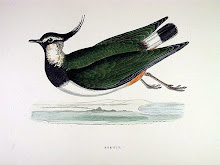
There is no doubting that the hoopoe is an exceptionally fine bird. In a way, he combines many creatures in a single form. To wit (to woo): he has zebra-like wings, a vaguely lion-like mane/crest and a beak sort of reminiscent of an anteater's snout, with which he does indeed extract ants from the ground. Like many a human, he likes to sunbathe, which he does by spreading out his wings on the ground and tilting his head back. However, this does not result in a tan.
The hoopoe's name derives from his 'oop-oop-oop' call. Humans have traditionally had mixed feelings about this particular bird. To much of Europe they were thieves and to Scandinavians they were harbingers of war, while it is very possible that King Tereus of Thrace, who raped his wife's sister Philomela, was turned into a hoopoe as a punishment (please see Ovid's Metamorphoses for further details). On a more positive note, a non-bird-loving close relation of TWW recently saw a hoopoe in Italy and was so taken with him that she rushed out to buy an ornithology book in order to learn more. Plus: in Ancient Egypt they were sacred, in Persia they were a symbol of virtue, and in Israel the hoopoe has recently been chosen as national bird.


